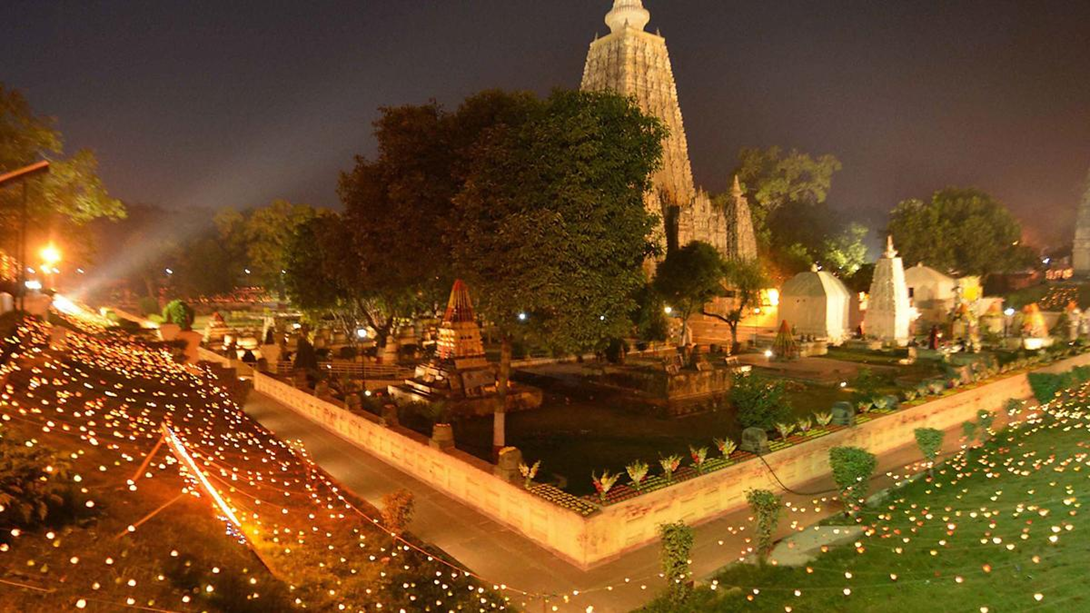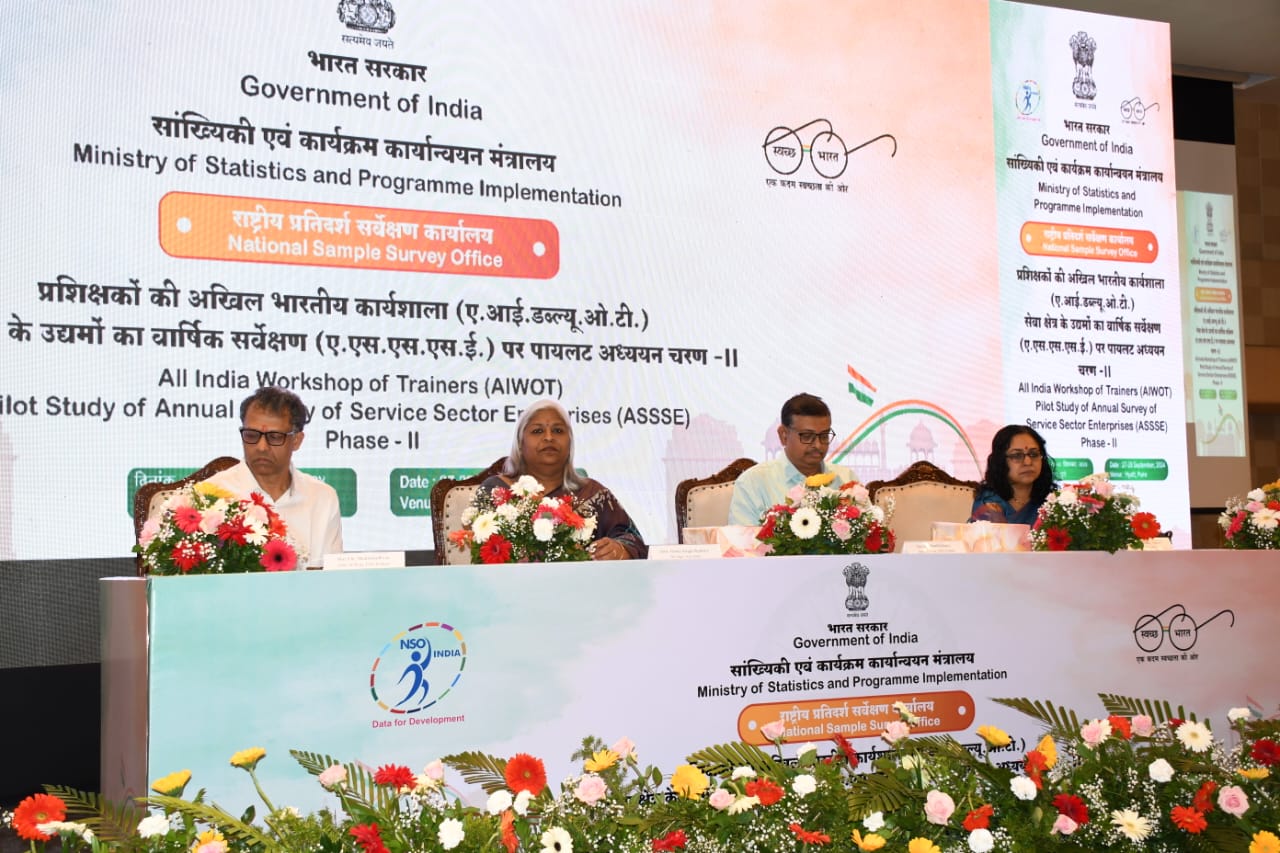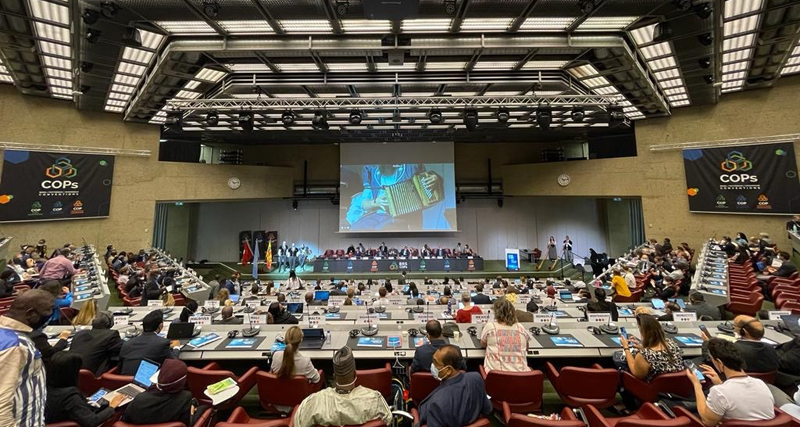- Courses
- GS Full Course 1 Year
- GS Full Course 2 Year
- GS Full Course 3 Year
- GS Full Course Till Selection
- CSAT
- 5 LAYERED ARJUNA Mentorship
- Public Administration Optional
- Online Program
- GS Recorded Course
- NCERT (Recorded 500+ Hours)
- Polity Recorded Course
- Geography Recorded Course
- Economy Recorded Course
- AMAC Recorded Course
- Modern India, Post Independence & World History
- Environment Recoded Course
- Governance Recoded Course
- Science & Tech. Recoded Course
- International Relations and Internal Security Recorded Course
- Disaster Management Module Course
- Ethics Recoded Course
- Essay Recoded Course
- Current Affairs Recoded Course
- ABOUT US
- OUR TOPPERS
- TEST SERIES
- FREE STUDY MATERIAL
- VIDEOS
- CONTACT US
Architectural Wealth Beneath Mahabodhi Temple in Bodh Gaya
Architectural Wealth Beneath Mahabodhi Temple in Bodh Gaya

A recent study using satellite images and ground surveys has revealed evidence of "huge architectural wealth" buried beneath the Mahabodhi temple complex and its surroundings in Bihar's Bodh Gaya.
Background:
The Mahabodhi temple complex, a UNESCO World Heritage site, is one of the four holy areas related to the life of Lord Gautam Buddha. Bodh Gaya is a place where Lord Buddha is believed to have attained enlightenment.
Study Findings:
The study, conducted by the Bihar Heritage Development Society (BHDS) in collaboration with Cardiff University of the United Kingdom, used geospatial analysis to identify buried structures beneath the soil.
- The satellite images show an alignment of structures to the north of the temple, buried underground.
- The images also show the shift of the river Niranjana from east to west, which is significant as the Mahabodhi temple is west of the river, and the Sujata Stupa and several other archaeological remains are located east of the river.
Significance of the Findings:
- The findings suggest that the monuments and other archaeological remains, now east of the river, were a part of the Mahabodhi complex in the past.
- The study has unearthed evidence of the presence of archaeological treasure beneath the soil of the UNESCO World Heritage site and its surrounding areas.
Future Plans:
The BHDS plans to start research to delimit the boundaries of the Mahabodhi complex in light of these findings.
- Fresh ground-penetrating radar (GPR) survey, followed by excavations, will be undertaken to unravel the buried archaeological features shown by satellite images.
About the Project:
The project, 'Archaeology on the footsteps of the Chinese traveller Xuanzang', is a collaboration between the BHDS and Cardiff University.
- The project aims to study the archaeological trail of the travel of 7th-century Chinese translator monk, Xuanzang, in Bihar.
About Xuanzang:
Xuanzang, also known as Hiuen Tsang, was a Chinese Buddhist monk, scholar, traveller, and translator.
- He travelled from China to India to obtain Buddhist scriptures during the reign of King Harsha Vardhan.
- His writings had a significant impact on the development of Buddhism in China.
About the Mahabodhi Temple Complex:
The Mahabodhi Temple Complex is one of the four holy sites related to the life of Lord Buddha, marking the spot of the Buddha's Enlightenment (Bodhi).
- It is located in Bodh Gaya, in central Bihar, on the banks of the Niranjana River.
- It is one of the few surviving examples of early brick structures in India.
- The present temple dates from the 5th or 6th centuries.
- It was recognized as a UNESCO World Heritage Site in 2002.
Features of the Mahabodhi Temple Complex:
The complex comprises the 50-meter-high grand Temple, six sacred places within an enclosed area, and a seventh one, the Lotus Pond, just outside the enclosure to the south.
- The most important of the sacred places is the giant Bodhi Tree.
- Ashoka's stone slab, purporting to mark the exact position where the Buddha sat, is traditionally called the Buddha's vajrasana (literally "diamond throne" or "thunder seat").
- The grand temple's pyramidal shikhara (tower) comprises several layers of niches, arch motifs, and fine engravings.
What is a UNESCO World Heritage Site?
A World Heritage Site (WHS) is a landmark or area with legal protection by an international convention administered by the UNESCO under the UNESCO World Heritage Convention, established in 1972.
- These sites are designated by UNESCO for having cultural, historical, scientific or other forms of significance.
Challenges:
The study faced challenges in terms of accessing the site, as it is a sacred place for Buddhists.
- The team had to use non-invasive techniques to avoid damaging the site.
Conclusion:
The discovery of buried structures beneath the soil has the potential to shed new light on the history of Buddhism in India. Further research and excavations are needed to fully understand the significance of the findings.
Must Check: Best IAS Coaching In Delhi
UPSC Prelims Result 2024 Out: Expected Cut Off & Other Details, UPSC Prelims 2024 Answer with Explanation, Daily Prelims Quiz, Daily Current Affairs, MONTHLY CURRENT AFFAIRS TOTAL (CAT) MAGAZINE, Best IAS Coaching Institute in Karol Bagh, Best IAS Coaching Institute in Delhi, Daily Mains Question Answer Practice, ENSURE IAS UPSC Toppers, UPSC Toppers Marksheet, Previous Year Interview Questions, UPSC Syllabus



